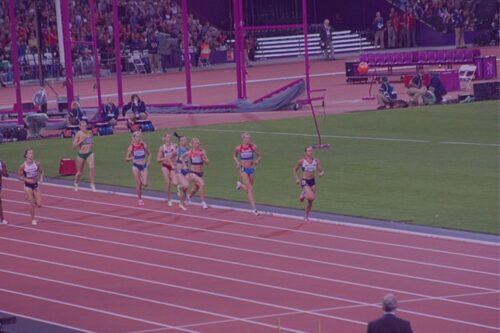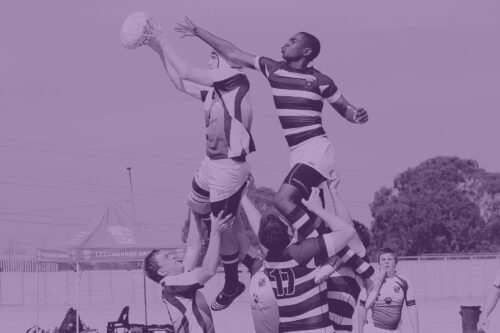Engaging men and challenging harmful masculinities in sports
In a sports ecosystem largely dominated by men, especially in leadership positions, masculinity is strongly embedded in the overall discourse and can present a major barrier to gender equality.
As SUPPORTER partners - sports higher education institutions - are developing intersectional Gender Equality Plans (GEPs), encouraging their institutions to embrace all gender identities, we take a look at harmful masculinities and how addressing these can benefit all gender groups and society overall. What is masculinity? How can it be harmful? How can positive masculinities contribute to an inclusive sports ecosystem?
Identifying harmful masculinities in sports:
Masculinity is a diverse range of behaviours, characteristics, and roles across cultures, changing over time (Connor et al., 2021). Understanding masculinity is essential for addressing harmful attitudes and promoting positive change in sports institutions.
Hegemonic, toxic, and fragile masculinities perpetuate negative attitudes:
- Hegemonic Masculinity: the pattern of practice that allowed men's dominance over women to continue (Connell and Messerschmidt, 2005)
- Toxic Masculinity: the unhealthy practices of masculinity, practices which are supposedly responsible for predatory and aggressive heterosexual behaviour, often resulting in violence (Waling, 2019)
- Fragile Masculinity: an anxiety or fear from not being conformed to rigid norms, leading to defensive or aggressive responses (Galla, 2023).
In sports, harmful masculinities can lead to:
- Unhealthy attitudes: glorification of extreme individualism and aggressive competition, creating toxic environments.
- Impact on mental health: pressure to conform to rigid norms, contributing to depression in men.
- Relationship dynamics: unhealthy attitudes influencing relationships and contributing to gender-based violence and avoidance of emotional issues.
Embracing Positive Masculinities
Promoting positive masculinities comes from a place of strength, gender equality, and compassion. Key traits include emotional awareness, help-seeking, self-love, and emotional release (Galla, 2023).
Positive masculinities contribute to gender equality in sports by:
- Challenging gender stereotypes: by challenging traditional gender norms, promoting inclusivity, and accepting diverse expressions of masculinity and femininity.
- Supporting gender balance: by breaking free from restrictive gender roles, paving the way for gender balance and diversity in sports participation and leadership.
- Encouraging mutual respect: by creating mutual respect and empathy, enabling healthier relationships and team dynamics.
- Reducing gender-based violence: by promoting non-violent conflict resolution and communication skills, helping to mitigate instances of gender-based violence both in sports and in other fields.
To achieve gender equality in sports institutions and faculties, it's important to include discussions on masculinities alongside those on gender equality. Here's why:
- Deconstruct stereotypes: addressing masculinity challenges stereotypes - not only about men, but also about women, non-binary people and other gender identities, thereby promoting a more nuanced understanding of gender dynamics.
- Avoid backlash: focusing solely on women's empowerment without addressing men and masculinities may lead to resistance or backlash from men who feel threatened by the perceived loss of power or privilege.
- Prevent identity threat: inclusive discussions on men and masculinities can help men feel valued and included in the gender equality movement, reducing feelings of identity threat or alienation.
- Intersectional gender equality: true gender equality requires dismantling restrictive gender norms for all individuals, regardless of gender identity.
By challenging harmful stereotypes, ensuring inclusivity, and promoting healthy attitudes and behaviours, sports institutions become a safer environment where everyone, regardless of their gender, can thrive.
References:
Connell, R. W., and James W. Messerschmidt. “Hegemonic Masculinity: Rethinking the Concept.” Gender & Society, vol. 19, no. 6, Dec. 2005, pp. 829–859, https://doi.org/10.1177/0891243205278639.
Connor, S., Edvardsson, K., Fisher, C., & Spelten, E. (2021). Perceptions and interpretation of contemporary masculinities in Western culture: A systematic review. American Journal of Men’s Health, 15(6). https://doi.org/10.1177/15579883211061009
Jewkes R., Morrell R. Sexuality and the Limits of Agency among South African Teenage Women: Theorising Femininities and Their Connections to HIV Risk Practices. Social Science & Medicine. 2012;74(11):1729–1737. doi: 10.1016/j.socscimed.2011.05.020. [PMC free article] [PubMed] [CrossRef] [Google Scholar]
Galla, Sean. “Positive Masculinity - Everything You Need to Get Started.” MensGroup.com, 2023, mensgroup.com/positive-masculinity/.
Waling, A. (2019). Problematising ‘toxic’ and ‘healthy’ masculinity for addressing gender Inequalities. Australian Feminist Studies, 34(101), pp. 362-375. DOI:
10.1080/08164649.2019.1679021



